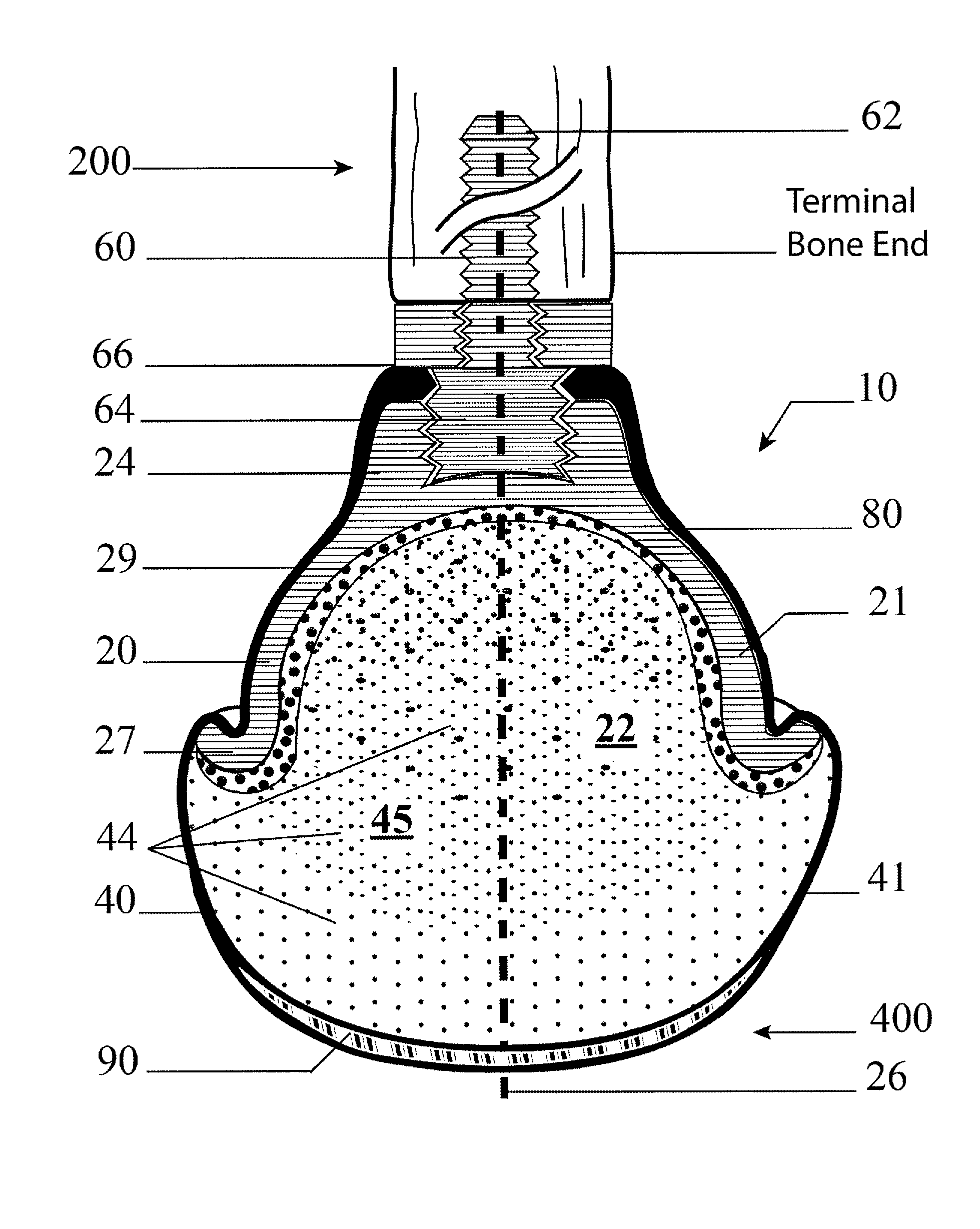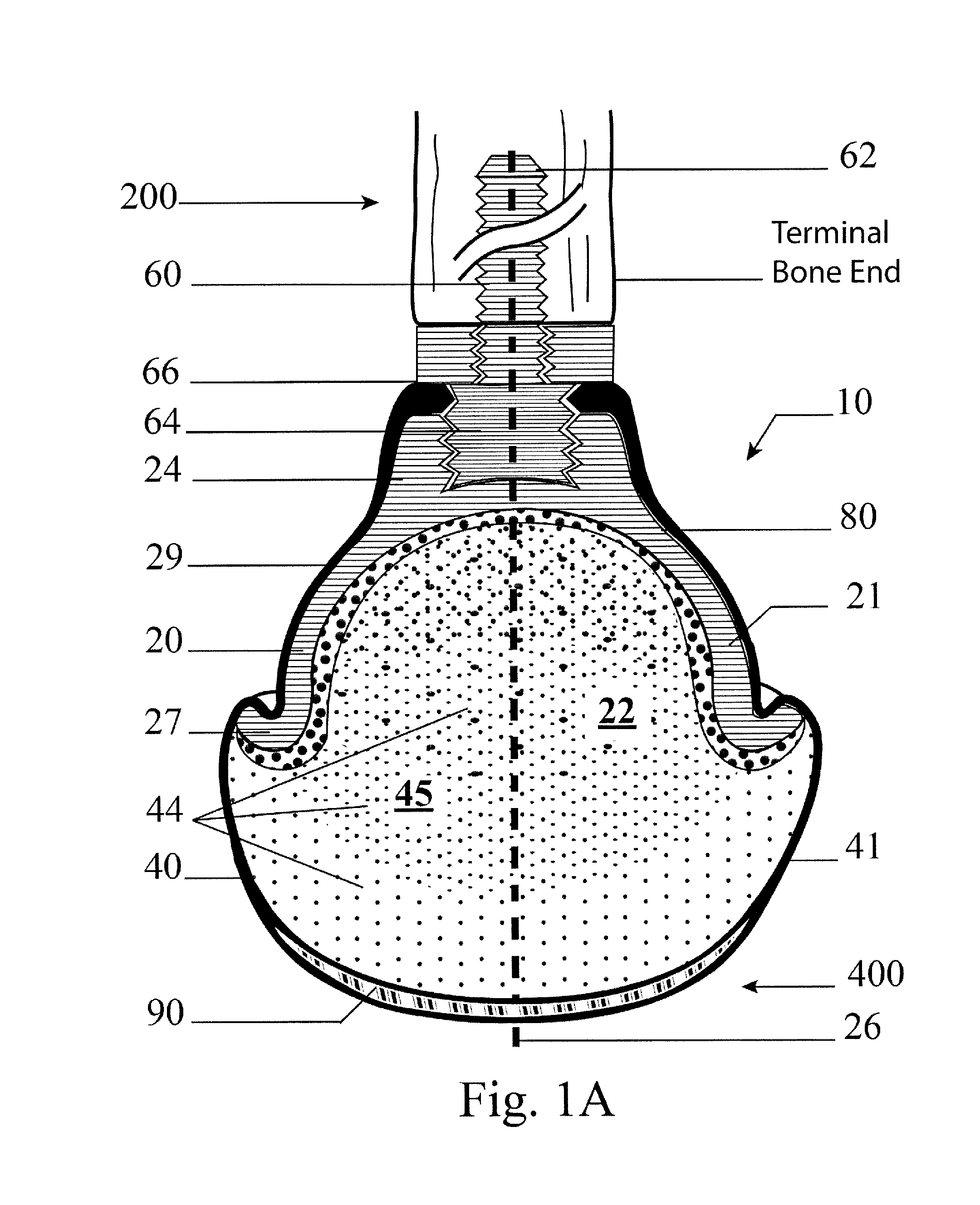Shock absorbing implantable limb prosthetic
a technology of implantable limbs and prosthetics, applied in the field of shock absorption implantable limb prosthetics, can solve the problems of specific disadvantages of lower limb amputees, affecting the stability of standing or ambulation, so as to reduce pain and discomfort, improve the dynamic interaction, and high
- Summary
- Abstract
- Description
- Claims
- Application Information
AI Technical Summary
Benefits of technology
Problems solved by technology
Method used
Image
Examples
Embodiment Construction
[0033]The subject invention describes embodiments of a device for implantation into the residual end of an amputated limb. More specifically, the subject invention provides one or more embodiments of an implantable force-distribution support structure (FDSS) that can be fixed to the terminal bone end or bone stump in a residual limb. The FDSS can operate similarly to the natural hydrodynamic system of the skeleton, replacing, at least partially, what was lost with an amputation.
[0034]The following description will disclose that the embodiments of the subject invention are particularly useful for lower extremity amputations, in particular when used with external devices to provide ambulation to an amputee. However, a person with skill in the art will be able to recognize numerous other uses, such as, for example, upper body amputations, that would be applicable to the devices and methods of the subject invention. Thus, while the subject application describes embodiments for specific ...
PUM
 Login to View More
Login to View More Abstract
Description
Claims
Application Information
 Login to View More
Login to View More - R&D
- Intellectual Property
- Life Sciences
- Materials
- Tech Scout
- Unparalleled Data Quality
- Higher Quality Content
- 60% Fewer Hallucinations
Browse by: Latest US Patents, China's latest patents, Technical Efficacy Thesaurus, Application Domain, Technology Topic, Popular Technical Reports.
© 2025 PatSnap. All rights reserved.Legal|Privacy policy|Modern Slavery Act Transparency Statement|Sitemap|About US| Contact US: help@patsnap.com



